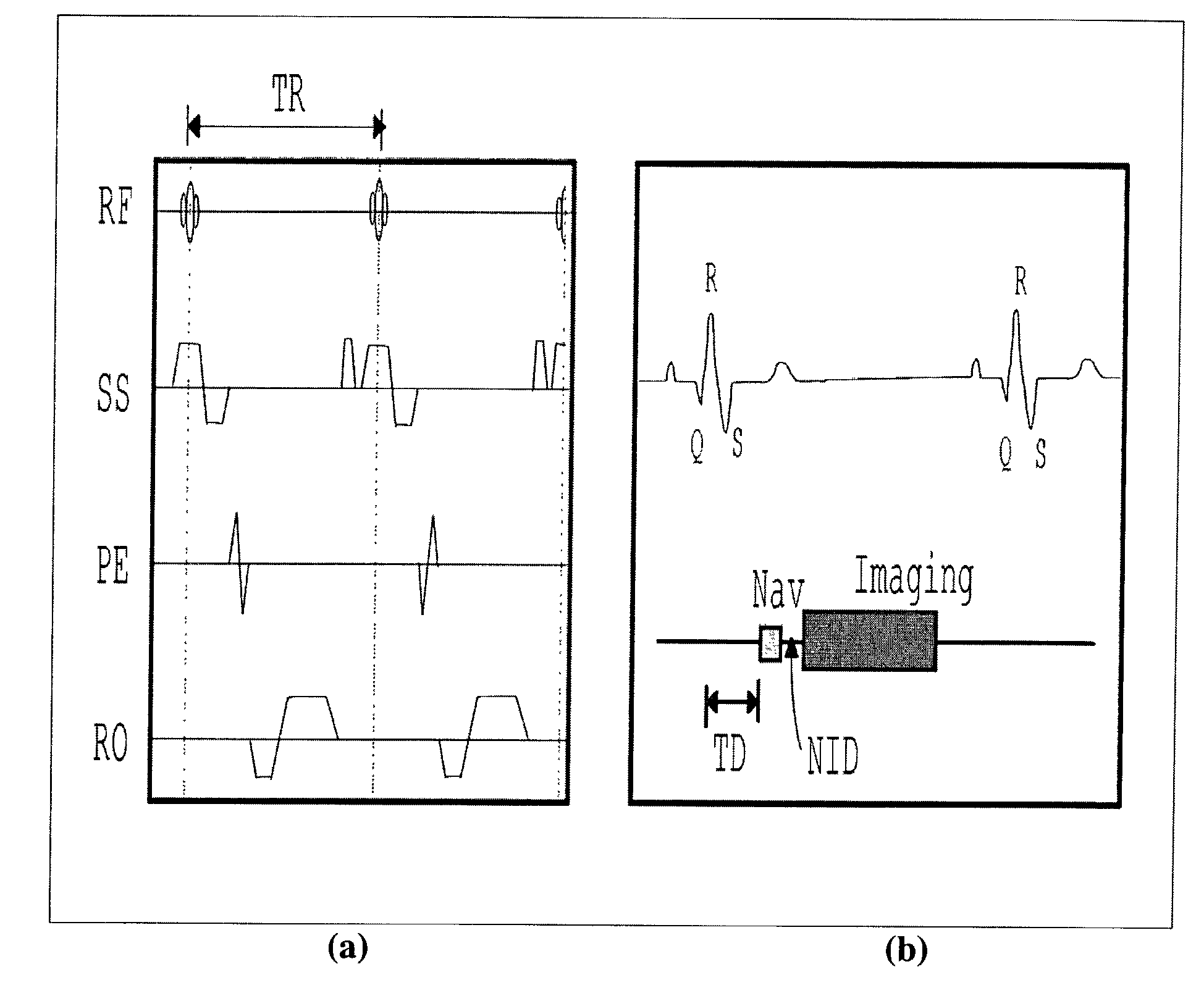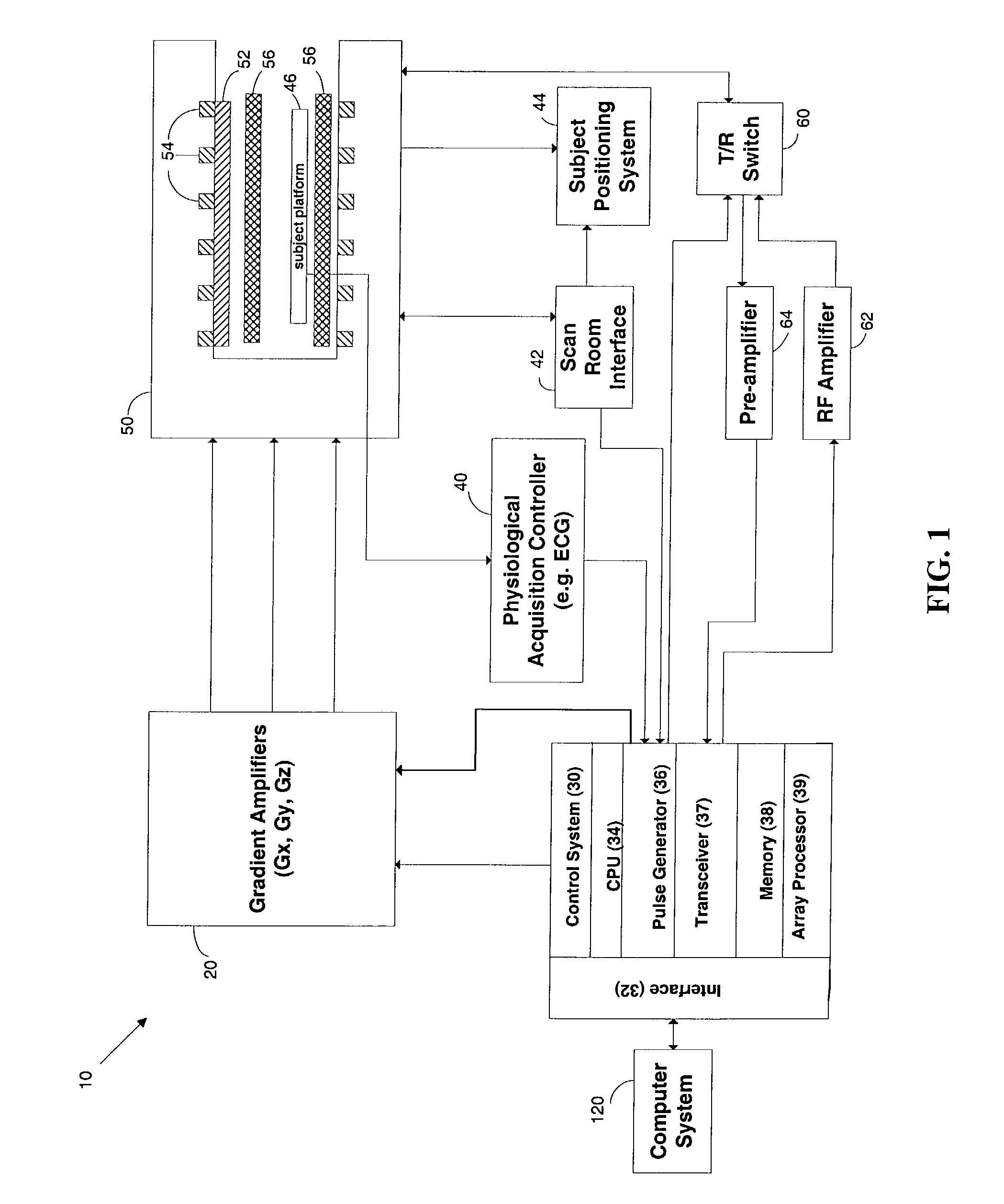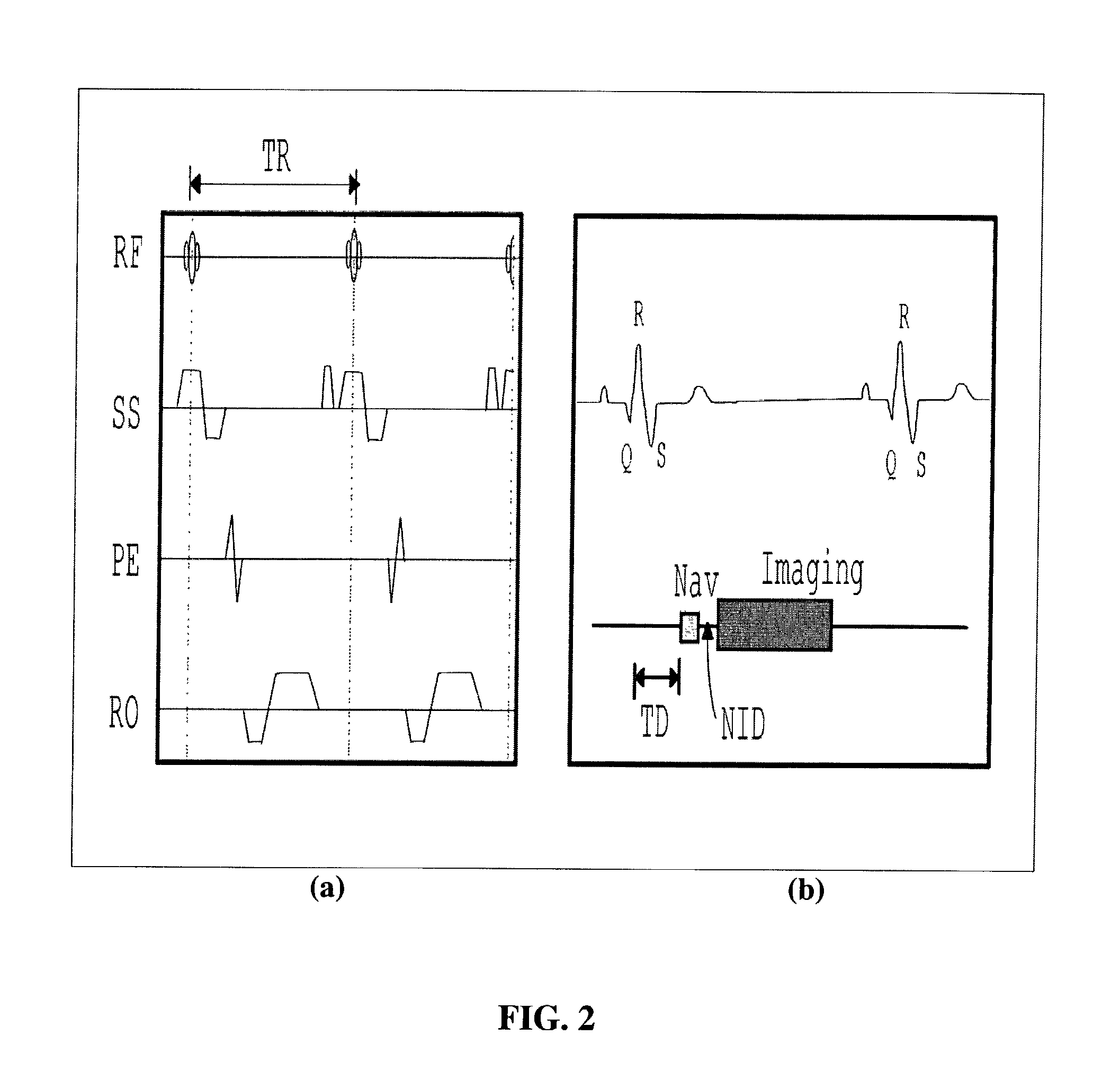MRI navigator methods and systems
a navigator and magnetic resonance technology, applied in the field of magnetic resonance imaging (mri), can solve the problems of reducing sharpness, affecting the clarity with which lesions and anatomic details can be depicted, and affecting the accuracy of the navigator
- Summary
- Abstract
- Description
- Claims
- Application Information
AI Technical Summary
Problems solved by technology
Method used
Image
Examples
example 1
MRI System
[0062]An exemplary MRI system is illustrated in FIG. 1. Referring to FIG. 1, the major components of a MRI system 10 that may be used to practice the disclosed methods are shown. The operation of the system is controlled by computer system 120 (see, Example 4 below). The computer system 120 includes a number of modules that communicate with each other, and with control system 30, through interface 32.
[0063]The control system 30 includes a set of modules connected together by an interface 32, and also connected to computer system 120 through interface 32. These modules include a CPU module 34. A pulse generator module 36 operates the system components to carry out the desired scan sequence and produces data which indicates the timing, strength and shape of the RF pulses produced, and the timing and length of the data acquisition window. The pulse generator module 36 connects to a set of gradient amplifiers 20, to indicate the timing and shape of the gradient pulses that are...
example 2
Cardiac Navigator
[0066]In this example, a cardiac navigator approach is described. The fast-flowing blood volume in the heart is tracked during the cardiac cycle. Due to its sensitivity to high velocity blood flow, the approach may be referred to as a Rapid-Motion-Perception (RaMP) navigator. In this approach, performing a complex difference analysis of the flow-sensitized profiles isolates the fast moving blood volume in the ventricles during the systolic emptying (or diastolic filling). The complex difference analysis suppresses the stationary or slow-moving spins in the excited volume. Simultaneous tracking of superior-inferior (SI) and anterior posterior (AP) movement of the heart is demonstrated by this approach. Small flip angle excitations gave sufficient SNR without creating saturation effects.
[0067]FIG. 2 shows a particular embodiment of the flow-sensitive navigator (RaMP) pulse scheme. In this instance, the RaMP sequence is comprised of a spoiled-Fast Low Angle Shot (FLASH...
example 3
Prospective Application of Navigator Signals
[0099]In this example, a prospective navigator approach was implemented on the clinical scanner described in Example 2 above earlier. FIGS. 16 and 18, respectively, show the RaMP implementation on two different human volunteers (Case I and Case II). These figures show the cardiac position over 15 successive cardiac cycles. Marker lines are drawn through the figures to illustrate the shift in position of the various organs, and the absence of heart motion.
[0100]In Case I (FIG. 16), an agarose-filled tube was placed above the phased-array surface coil, in order to track the motion correction determined from the RaMP implementation. The marker line drawn through the apex of the heart shows the motion of the tube and the various organs, and also shows that the heart appears stationary during the entire imaging cycle (15 heartbeats). The stationary nature of the heart image and the motion of the imaging slice can be tracked by monitoring the di...
PUM
 Login to View More
Login to View More Abstract
Description
Claims
Application Information
 Login to View More
Login to View More - R&D
- Intellectual Property
- Life Sciences
- Materials
- Tech Scout
- Unparalleled Data Quality
- Higher Quality Content
- 60% Fewer Hallucinations
Browse by: Latest US Patents, China's latest patents, Technical Efficacy Thesaurus, Application Domain, Technology Topic, Popular Technical Reports.
© 2025 PatSnap. All rights reserved.Legal|Privacy policy|Modern Slavery Act Transparency Statement|Sitemap|About US| Contact US: help@patsnap.com



